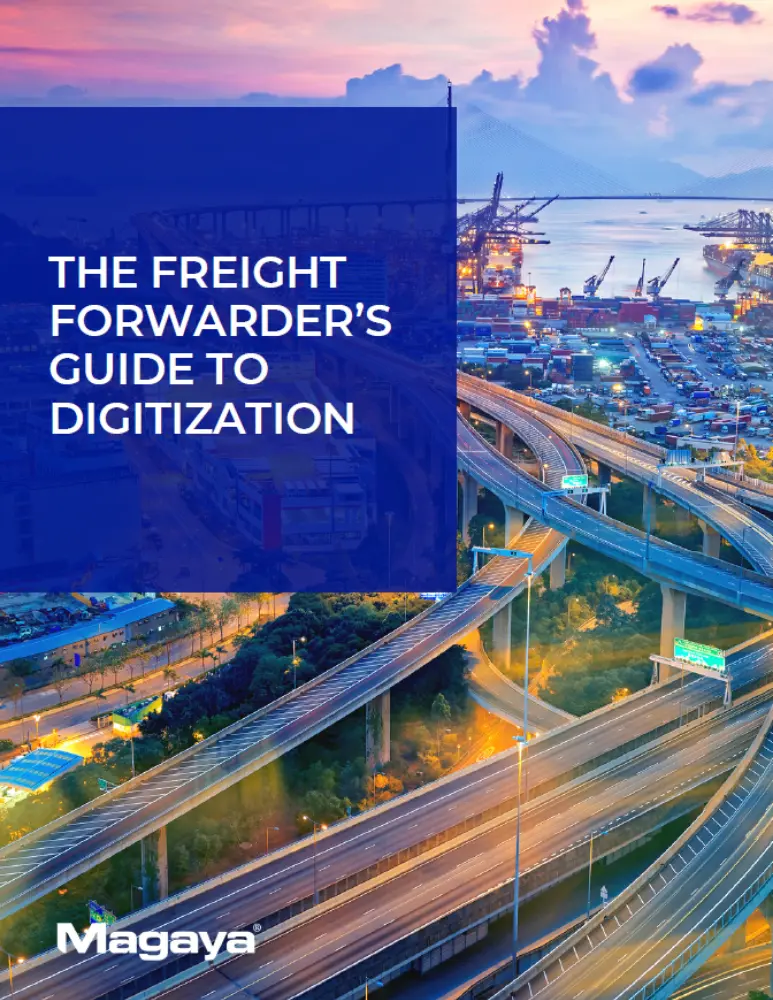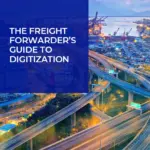How to Make the Leap from Traditional Forwarder to Digital Freight Forwarder
Digital-first forwarders and marketplaces have been making waves in the logistics industry in recent years. Disrupting a space that has long been slow to innovate, these new players are technology companies first, looking to modernize the experience and workflows related to shipping and freight forwarding.
Capitalizing on the growing demand for hands-on, digital solutions that allow customers to manage their shipments without sending a barrage of emails or picking up a phone, digital freight forwarders deliver a slick, user-friendly, self-serve experience with added visibility and interactivity.
Customers aren’t the only ones reaping the benefits. By eliminating emails and phone calls, forwarders save time, eliminate errors, and can repatriate staff to strategic growth initiatives rather than bureaucratic busywork.
All of this points to the fact that digital forwarders have a distinct competitive advantage, making the adoption of digital solutions no longer a “nice-to-have” but rather an imperative for freight forwarders and other logistics service providers (LSP). Becoming a digital freight forwarder is a must for survival.
The good news? New software makes it possible for even the most traditional forwarders to modernize their operations to enjoy all the conveniences that digitization can provide. But, not all digital freight forwarder software is alike.
Here’s a glimpse at eight key features to look for in a digital freight forwarding solution:
- Customer Experience Portal – The era of doing business with freight forwarders and logistics services providers by email, phone, and fax is over. The cornerstone of a digital freight platform is its customer experience portal, allowing customers to transact online and keep informed of every aspect of their shipments digitally.
- Rate Management – Up-to-date, accurate rates are essential for quoting to customers, collaborating with agent partners, and for optimal business performance overall. With digital freight rate management and distribution, you’re able to respond faster to quote requests and improve customer satisfaction and organizational efficiency.
- Quotes – By letting your customers quote online, you can significantly elevate your customer experience while also dramatically lowering your cost of sales. You can save time for both your customer and sales staff by letting customers do the data entry work, and then they can even convert their quotes into bookings in just a few clicks.
- Schedules – Look for a digital freight portal that takes the manual effort out of maintaining and sharing schedules from multiple ocean freight carriers by letting you define an allocation table, or routing guide, where you link carriers to trade lanes and set up filters. The more carriers, consolidators, and airlines that connect with the portal, the less legwork you’ll have to do.
- Bookings – With a single portal for multimodal shipping, you’re able to seamlessly enter all your electronic cargo bookings in one connected system that’s directly integrated with your carrier and NVOCC partners for a faster, more effective way to execute freight transactions.
- Shipments – By allowing your customers to interact directly with operators via a digital portal and respond to status changes when needed, you save keystrokes and time, expediting shipments and boosting productivity. Plus, with a single source of the truth, you can easily keep track of all milestones and communication with the client on shipment level.
- Tracking and Visibility – Your customers want door-to-door tracking, exceptions, and delays in real-time (not when the carrier website or U.S. Customs finally updates). Deliver a better customer experience by offering comprehensive and complete supply chain tracking data as part of your freight management service.
- Reporting – With built-in reporting, your customers can build, download, and even schedule their own reports for all transactions with you, directly from an online portal, giving them priceless information, autonomy, and control.
Interested in learning more about how to become a digital freight forwarder and what to look for in a digital freight portal? Download the Freight Forwarder’s Guide to Digitization, where we take a deeper dive into the seismic shift happening in the freight forwarding industry and the digital capabilities that will set you apart from other online freight forwarders.
The Freight Forwarder’s Guide to Digitization
8 Ways to Use Technology to Grow Your Business

